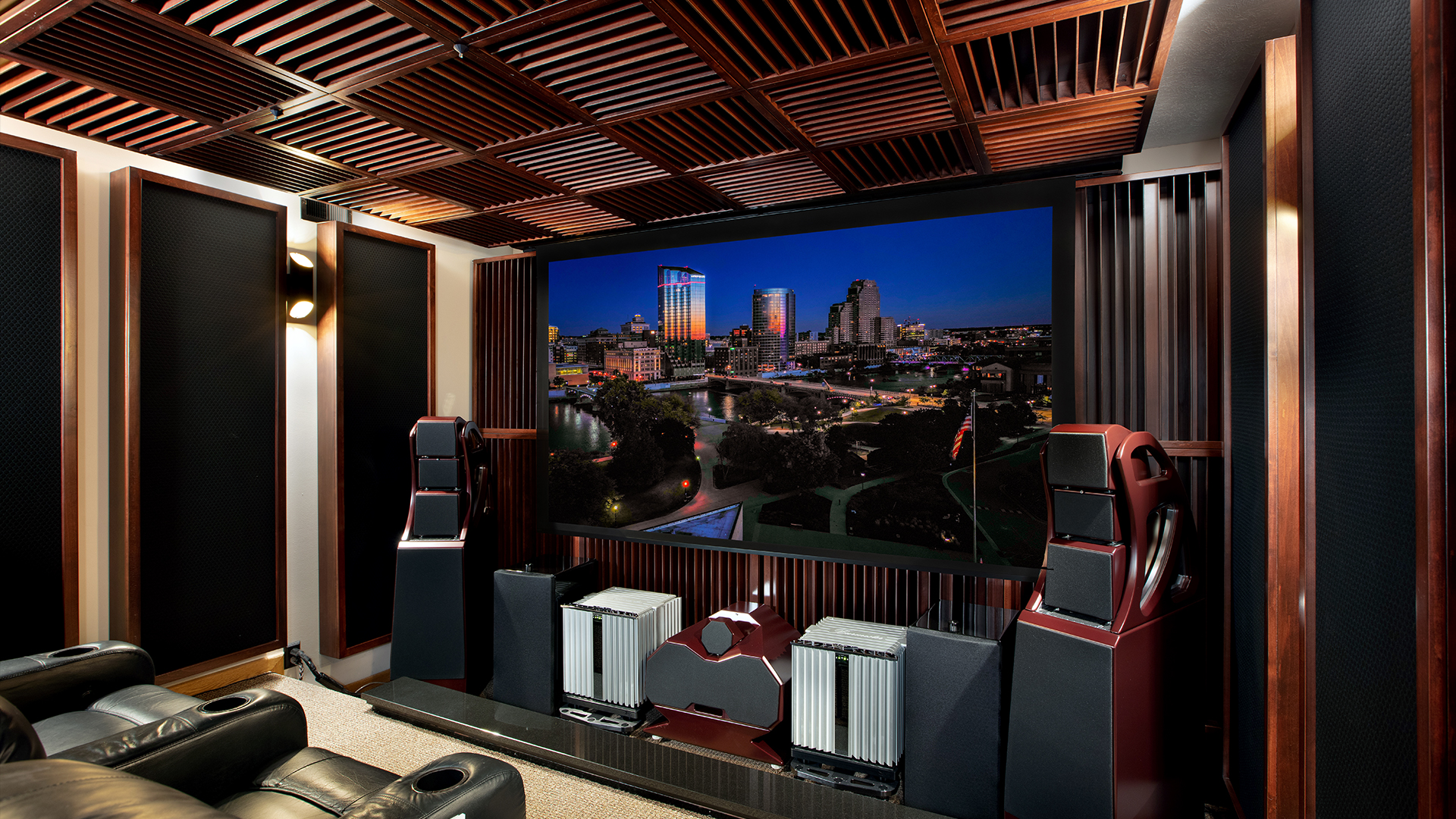
Table of Contents
Understanding Home Theater Costs: Starting with Noise Control
How much does a home theater costs can have many answers. The answer to how much does a home theater costs must first start with noise transmission. Low frequency “noise” produced by the car crashes and explosions that occur in today’s movie world. If this noise leaves the room and it will, it can disturb others in adjacent rooms or neighborhoods. Keeping the sound energy within the room and keeping outside noise from entering the room is the job of the barrier.
Barriers designed for home theaters with multiple full range channels can be 8-12″ deep. How much does a home theater cost must include the cost of the barrier which is built to control noise transmission. A barrier can cost 4 – 5 times the cost of the absorption and diffusion to treat the energy within the room.

Measuring Neighborhood Noise: A Key Factor in Home Theater Expenses
To determine the proper barrier design so one can answer the search term how much does a home theater cost adequately, you must measure the noise in the rooms next door or the neighborhood itself. We can simulate the noise you will produce inside the home theater. What we don’t know is how quiet or noisy the neighborhood is.
All noise transmissions must be considered when one is putting together numbers to answer the complex question of how much does a home theater cost. Noise transmission and the structure or barrier that you must build can take a lot of the budget and then there will be no dollars left for treatment. Treatment comes in two main forms. There are treatments for lower frequency sound pressure and there are treatments for reflections or reverberation.

Navigating Low Frequency Challenges in Home Theater Design
Frequencies below 80 hz. are considered low frequencies. They are pressure waves of energy that oscillate throughout the room. Some frequencies of energy will fit into the dimensions of the room. Most will not. A 40 hz. wavelength is 28′ long. Most room dimensions can not support these longer low frequency wavelengths. When the wavelength won’t fit into the room dimensions, we have room modes. Room modes do two things to our sound quality.
They exaggerate some frequencies or sound and they can completely eliminate others. You can have too much energy at certain frequencies (bass boom) or you won’t hear anything at all. Neither are desirable in a room for music and voice. To treat lower frequency pressure issues within the room, we must use pressure activated technology. To treat the reflections from the room walls and ceiling, we use sound absorption technology that works on air flow across the surface areas.

Categorizing Treatment Needs for Comprehensive Sound Management
Home much does a home theater cost depends on the barrier required and the amount of low, middle, and high frequency absorption that is required to manage the energy within the room. When treating the energy that stays within the room, we must divide the treatment type into two main categories.
We must use sound pressure based technologies for lower frequency issues and for middle and high frequency absorption we use technology that works on air flow across its surface area. At Acoustic Fields, we have two main low frequency absorption technologies. We have our ACDA series which starts at 30 hz. and goes through 6,300 hz. Our Carbon Panel starts at 40 hz. and goes through 6,300 hz.

DIY vs. Professional Solutions: Balancing Cost and Expertise in Home Theaters
We can assist you with both noise and treatment issues. We can send you apps that you download on your phone. You take the noise measurements per our instructions and record the numbers on our online data sheet. You send the sheet back to use and we send you a drawing of the barrier that you will build to deal with your specific noise issues.
With our treatment options you can purchase the units from us, we ship them to you and you install them per our instructions. You can also purchase the materials from us and use our DIY drawings, build the units yourself and install them. You must have 3-5 years woodworking experience along with a full shop. DIY costs are sround 40% less than retail pricing.







